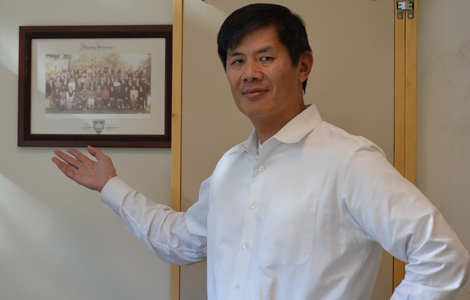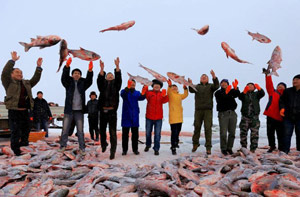Humanitarian crises demand better response
Updated: 2014-10-25 09:44
By Elhadj As Sy(China Daily)
|
||||||||
More than 250 representatives of the International Federation of Red Cross and Red Crescent Societies have gathered in Beijing this week for their 9th Asia Pacific Regional Conference to discuss new and innovative approaches toward meeting today's humanitarian challenges.
Every day, the 47 National Red Cross and Red Crescent Societies in the Middle East, Asia and the Pacific are tackling human suffering in various forms. While we live in an era of incredible technological advances and major achievements in combating disease, we also live in a time of great uncertainty where conventional drivers of humanitarian crises such as natural disasters and conflicts are increasingly interacting with new forms of hazards.
The escalation of protracted crises in the Middle East has had grave humanitarian consequences. More than 4 million people in the region have fled their countries of origin due to conflicts. In Iraq, recent waves of violence are creating a serious refugee crisis. In Syria, millions continue to rely upon the aid from the Syrian Arab Red Crescent.
As humanitarian space shrinks, the security of our staff and volunteers is increasingly at risk - across the region we (IFRC) have lost almost 50 colleagues in the line of duty. It is unacceptable that so many people have lost their lives while trying to save the lives of others.
About 89 percent of people affected by natural disasters worldwide are living in the Asia Pacific region. We are seeing changing patterns in disasters, where climate change is driving extreme weather events that are putting greater numbers of people at risk. Disasters are becoming more unpredictable in their location and frequency, exemplified by Typhoon Haiyan, which killed more than 6,000 people across the Visayas region of central Philippines one year ago.
A total of 500 million people in Asia Pacific live in slums or informal settlements. This rapid urban growth has brought new risks, outpacing the ability of cities to absorb such numbers and provide essential infrastructure and services such as water, sanitation and drainage. Cities will increasingly feel the combined impact of increasing heat waves, air pollution, severe storms and infectious diseases.
The IFRC recognizes the need to help the growing number of urban poor to better prepare for, respond to and recover from disasters. Our "community resilience" agenda integrates disaster risk reduction together with public health and climate change adaptation strategies.
Communicable diseases such as dengue remain a significant threat, but now it is non-communicable diseases or "life-style" diseases, such as diabetes, heart disease and cancer, that are the leading killers in the region. Prevention efforts need to be based not only on effective primary care and access to health services, but also earlier investment in the promotion of healthy lifestyles, particularly among young people.
Today, many new humanitarian players are emerging and we recognize the need to become more innovative in developing partnerships, particularly with emerging humanitarian donors in the Persian Gulf and Asia region, the corporate sector and multilateral organizations.
Partnership also extends to embracing technological solutions that can revolutionize how we deliver services and engage with communities. Communications technology is now part of the humanitarian landscape and we are already using apps for mobile data collection in our health programs and to send mass SMSes for disaster warnings.
While our humanitarian mission remains unchanged, the Beijing Declaration we arrive at re-affirms our resolve and commitment to capitalize on opportunities and ensures that we remain relevant to the needs of today's fast-changing world.
The author is secretary general, International Federation of Red Cross and Red Crescent Societies.

 Music at her fingers
Music at her fingers
 Across America Over the Week (Jan 16 - Jan 22)
Across America Over the Week (Jan 16 - Jan 22)
 Spend Chinese New Year in style
Spend Chinese New Year in style
 Ili river valley becomes a popular destination for swans
Ili river valley becomes a popular destination for swans
 Philip Ma: from scientist to businessman
Philip Ma: from scientist to businessman
 Birmingham's Spotlight on China dinner
Birmingham's Spotlight on China dinner
 How to distinguish doucai, wucai, Famille-rose and enamel porcelain
How to distinguish doucai, wucai, Famille-rose and enamel porcelain
 Xinjiang lake in bumper fishing season
Xinjiang lake in bumper fishing season
Most Viewed
Editor's Picks

|

|

|

|

|

|
Today's Top News
Houston's SW Chinatown
China to focus on reforms, opening of capital market
Slowdown brings new risks to banks
Trade group calls for BIT
Market status for China is 'political' issue
Birmingham's Spotlight on China dinner
Bank takes renminbi-clearing seriously
Traditional Garb
US Weekly

|

|







